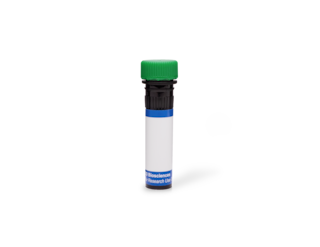-
Reagents
- Flow Cytometry Reagents
-
Western Blotting and Molecular Reagents
- Immunoassay Reagents
-
Single-Cell Multiomics Reagents
- BD® OMICS-Guard Sample Preservation Buffer
- BD® AbSeq Assay
- BD® Single-Cell Multiplexing Kit
- BD Rhapsody™ ATAC-Seq Assays
- BD Rhapsody™ Whole Transcriptome Analysis (WTA) Amplification Kit
- BD Rhapsody™ TCR/BCR Next Multiomic Assays
- BD Rhapsody™ Targeted mRNA Kits
- BD Rhapsody™ Accessory Kits
- BD® OMICS-One Protein Panels
-
Functional Assays
-
Microscopy and Imaging Reagents
-
Cell Preparation and Separation Reagents
-
- BD® OMICS-Guard Sample Preservation Buffer
- BD® AbSeq Assay
- BD® Single-Cell Multiplexing Kit
- BD Rhapsody™ ATAC-Seq Assays
- BD Rhapsody™ Whole Transcriptome Analysis (WTA) Amplification Kit
- BD Rhapsody™ TCR/BCR Next Multiomic Assays
- BD Rhapsody™ Targeted mRNA Kits
- BD Rhapsody™ Accessory Kits
- BD® OMICS-One Protein Panels
- Norway (English)
-
Change location/language
Old Browser
This page has been recently translated and is available in French now.
Looks like you're visiting us from {countryName}.
Would you like to stay on the current location site or be switched to your location?
BD Transduction Laboratories™ Purified Mouse Anti-Syntaxin 6
Clone 30/Syntaxin 6 (RUO)







Western blot analysis of Syntaxin 6 on a A431 cell lysate (Human epithelial carcinoma; ATCC CRL-1555). Lane 1: 1:500, lane 2: 1:1000, lane 3: 1:2000 dilution of the mouse anti-Synatixin 6 antibody.
Immunofluorescence staining of PSFK-1 cells (Human neuroectodermal tumor line; ATCC CRL-2060).

Western blot analysis of Syntaxin 6 on a A431 cell lysate (Human epithelial carcinoma; ATCC CRL-1555). Lane 1: 1:500, lane 2: 1:1000, lane 3: 1:2000 dilution of the mouse anti-Synatixin 6 antibody.

Immunofluorescence staining of PSFK-1 cells (Human neuroectodermal tumor line; ATCC CRL-2060).

Immunohistochemical staining on a rat brain section for Syntaxin 6. A formalin-fixed paraffin-embedded section with citrate buffer pretreatment (40X magnification).





Regulatory Status Legend
Any use of products other than the permitted use without the express written authorization of Becton, Dickinson and Company is strictly prohibited.
Preparation And Storage
Recommended Assay Procedures
Western blot: Please refer to http://www.bdbiosciences.com/pharmingen/protocols/Western_Blotting.shtml
Product Notices
- Since applications vary, each investigator should titrate the reagent to obtain optimal results.
- Please refer to www.bdbiosciences.com/us/s/resources for technical protocols.
- Caution: Sodium azide yields highly toxic hydrazoic acid under acidic conditions. Dilute azide compounds in running water before discarding to avoid accumulation of potentially explosive deposits in plumbing.
- Source of all serum proteins is from USDA inspected abattoirs located in the United States.
Companion Products


Signal transmission between cells is often regulated by the secretion of neurotransmitters or hormones into the extracellular space. This process is controlled by a complex pathway of membrane trafficking which leads to membrane fusion and secretion. Syntaxin 1 is involved in three important complexes that modulate the secretion process: syntaxin and n-sec-1; syntaxin, VAMP, and SNAP-25; and syntaxin, VAMP, SNAP-25, αSNAP, and NSF (20S complex). Syntaxin 6 is a 255 amino acid member of the syntaxin family. It contains a C-terminal transmembrane domain and is located at the Golgi apparatus. In addition, Syntaxin 6 displays significant (47% identity) homology with SNAP-25. In vitro, Syntaxin 6 has been reported to interact with α-SNAP. Syntaxin 6 has been reported to have a calculated molecular weight of 30.6 kDa, but has been observed to migrate in a range inbetween ~ 31-35 kDa.
Development References (4)
-
Bock JB, Lin RC, Scheller RH. A new syntaxin family member implicated in targeting of intracellular transport vesicles. J Biol Chem. 1996; 271(30):17961-17965. (Biology). View Reference
-
Mullock BM, Smith CW, Ihrke G, et al. Syntaxin 7 is localized to late endosome compartments, associates with Vamp 8, and Is required for late endosome-lysosome fusion. Mol Biol Cell. 2000; 11(9):3137-3153. (Biology: Blocking). View Reference
-
Ramalho-Santos J, Moreno RD. SNAREs in mammalian sperm: possible implications for fertilization. Dev Biol. 2000; 223(1):54-69. (Biology: Electron microscopy, Immunofluorescence, Western blot). View Reference
-
Shewan AM, van Dam EM, Martin S. SNAREs in mammalian sperm: possible implications for fertilization. Mol Biol Cell. 2003; 14(3):973-986. (Biology: Immunofluorescence, Immunoprecipitation, Western blot). View Reference
Please refer to Support Documents for Quality Certificates
Global - Refer to manufacturer's instructions for use and related User Manuals and Technical data sheets before using this products as described
Comparisons, where applicable, are made against older BD Technology, manual methods or are general performance claims. Comparisons are not made against non-BD technologies, unless otherwise noted.
For Research Use Only. Not for use in diagnostic or therapeutic procedures.